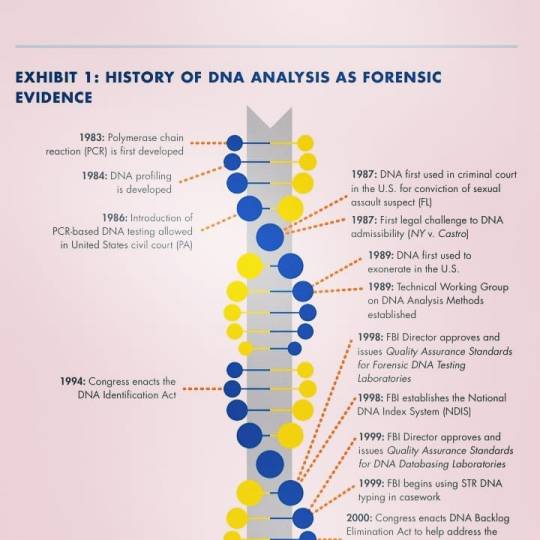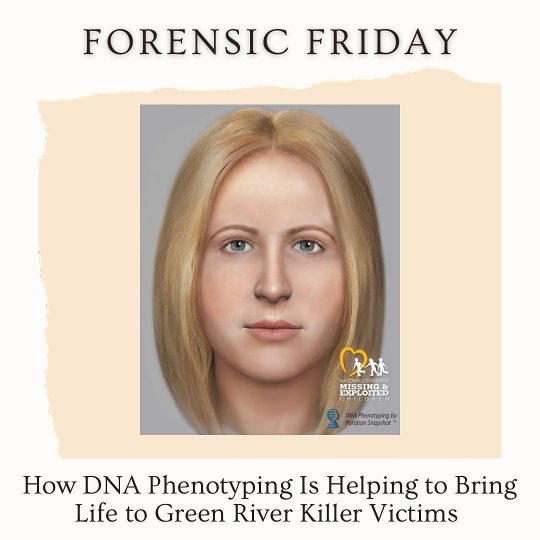#forensicdna
Text

#SmarTestLab#DNA#DNATesting#ForensicDNA#AncestryDNA#Paternity DNA#SiblngshipDNA#Non-InvasivePaternalTest(NIPP)
0 notes
Photo

HISTORY OF DNA ANALYSIS AS FORENSIC EVIDENCE ---------------------------- #forensic #forensics #forensicfield #forensicstudy #forensicscience #forensicintro #forensicbiology #forensicDNA ##dna #DNA #forensichistory #historyofforensic #forensicevidence #DNAanalysis #historyofdnaanalysis #forensicsciencehistory #criminology #criminalistic #forensiccriminology #forensiclab https://www.instagram.com/p/B7YaMS7l46A/?igshid=r025s40zfmxp
#forensic#forensics#forensicfield#forensicstudy#forensicscience#forensicintro#forensicbiology#forensicdna#dna#forensichistory#historyofforensic#forensicevidence#dnaanalysis#historyofdnaanalysis#forensicsciencehistory#criminology#criminalistic#forensiccriminology#forensiclab
1 note
·
View note
Photo

Posted @withregram • @kellythescientist A little late night #ForensicFriday anyone?! A new reconstruction of one of the Green River Killer’s unidentified victims was released today with the help of DNA Phenotyping! Swipe through to learn more and share her image, someone may know her! . . . . . . Sources: Help ID Me https://m.facebook.com/698376120190298/posts/4333305443363996/?d=n https://snapshot.parabon-nanolabs.com/phenotyping https://en.m.wikipedia.org/wiki/Gary_Ridgway . . . . . . . . #forensicscience #forensics #forensicscientist #csi #crimesolvers #coldcase #truecrime #crimesceneinvestigation #crimescene #garyridgway #criminology #criminalistics #crimescenecleanup #DNA #forensicDNA #forensicbiology #forensicfiles #forensicevidence #parabonnanolabs #serialkiller #biologist #wocinstem #womendoingscience #womeninscience #scicomm #greenriverkiller #biology #serialkillers #dnaphenotyping https://www.instagram.com/p/CNM97XXByjQ/?igshid=jnzthxk84au2
#forensicfriday#forensicscience#forensics#forensicscientist#csi#crimesolvers#coldcase#truecrime#crimesceneinvestigation#crimescene#garyridgway#criminology#criminalistics#crimescenecleanup#dna#forensicdna#forensicbiology#forensicfiles#forensicevidence#parabonnanolabs#serialkiller#biologist#wocinstem#womendoingscience#womeninscience#scicomm#greenriverkiller#biology#serialkillers#dnaphenotyping
0 notes
Text
What is STR Analysis?
Creating DNA profiles is a complex process. About 99.9 percent of information contained in all human DNA is the same. Thus, scientists are only left with 0.1 percent of DNA to work with when developing individual profiles. STR analysis is the most common DNA profiling method, and is the industry standard for creating profiles uploaded to the CODIS (Combined DNA Index System) database, the FBI's DNA index system. STR (short tandem repeat) analysis determines a person’s DNA profile by establishing how many times a DNA sequence, called a short tandem repeat unit, appears in a chromosomal location. The chromosomal location refers to the area in a chromosome where the DNA strand resides. Human DNA contains about 5 percent of the code responsible for traits. The rest is long nucleotide base pair stretches whose function scientists still don’t understand. Short tandem repeats appear as short, repetitive base pairs within these stretches. Since the number of repeats in a stretch is inherited and easily identifiable, they are the perfect genome identification markers. Quantifying STR markers is a technique used by forensic investigators to solve crimes. Scientists also use STR analysis to identify human remains, confirm male descent lines, confirm or reject paternity, and study ancient human migration patterns. The procedure comprises three processes. The first is amplification, where chemical reagents are added to the extracted DNA and then heated. The heat causes the DNA molecule’s two strands to separate. The resulting individual strands can be used as templates to synthesize new DNA molecules with two strands. The chemical reagents have primers, which are markers that identify the new duplicated DNA fragment’s start and endpoints. These primers are tiny DNA pieces matching highly-variable human DNA regions, stimulating the synthesis. The primers contain fluorescent labels that lasers can identify during the testing phase. Additionally, they attach to single-stranded DNA when the chemicals and DNA begin to cool. After they bind to the copied segment’s start and endpoints, individual DNA blocks from the reagents move to fill any remaining empty places. Scientists use a thermal cycler to heat and cool DNA. Inside the machine are cubes that hold the reagents and DNA. Notably, the operator can program this machine to heat and cool the contents at given intervals. After many cycles, the process creates millions of copies of the original sample’s DNA. This process amplifies any DNA present in the tubes. This means that if there was any DNA at the investigation site that didn’t belong to the criminal, it too would be amplified and potentially interfere with the interpretation of the results. Therefore, the standard practice is to use various control samples. Electrophoresis is the second step, where scientists sort the resulting DNA according to length. They begin by adding DNA to a molecular sieve, a gelatinous material with many tiny openings. By applying electric current to the material, DNA fragments start to move. During this process, the smaller fragments move longer distances than the larger ones. The distances these fragments move help establish their sizes. Capillary electrophoresis is similar to general electrophoresis. However, instead of using a gelatinous material, researchers use a capillary tube the size of a human hair containing a sieving material. It is mostly an automated process requiring minimal human input. A capillary electrophoresis machine works with lasers that identify fluorescent markers in the primers. The last step is interpretation. Using proprietary software, scientists can interpret results from the electrophoresis equipment. The software determines the DNA fragment sizes. Consequently, the information collected helps create DNA profiles.
Feedback Provided
Published On:
https://sorensonforensicsllc.wordpress.com/(February 14, 2022)
Username:
0 notes
Photo

✍ Paracelsus- The Father of Toxicology. ✍ Paracelsus (1493-1541), the father of toxicology said in the sixteenth century, “Everything is poison, there is poison in everything, only the dose makes a thing not a poison”. 🤔 If Paracelsus is father of Toxicology Then Who is Mathieu Orfilia? 🤳Comment your answer. -------------------------------- #forensic #forensics #forensicfield #forensicstudy #forensicscience #forensicintro #forensicbiology #forensicDNA ##dna #DNA #forensichistory #historyofforensic #forensicevidence #DNAanalysis #historyofdnaanalysis #forensicsciencehistory #criminology #criminalistic #forensiccriminology #forensiclab #toxic #poison #fatheroftoxicology #toxicology #poisonandmedicine #medicine https://www.instagram.com/p/B7dRY8rpRJG/?igshid=15ym4fk1fuw3b
#forensic#forensics#forensicfield#forensicstudy#forensicscience#forensicintro#forensicbiology#forensicdna#dna#forensichistory#historyofforensic#forensicevidence#dnaanalysis#historyofdnaanalysis#forensicsciencehistory#criminology#criminalistic#forensiccriminology#forensiclab#toxic#poison#fatheroftoxicology#toxicology#poisonandmedicine#medicine
0 notes